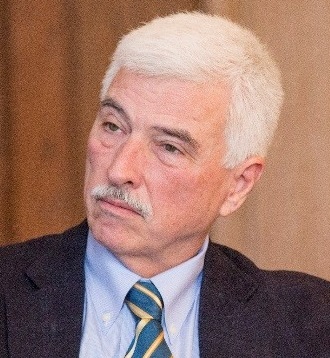Monthly Archives: September 2020
Sep 16, 2020 Tom SimmonsLexElder Law
In Access to Algorithms, Professor Bloch-Wehba unleashes both the First Amendment and FOIA (the Freedom of Information Act, along with its state counterparts) on algorithmic governance opacity. She argues that the law of access encompassed by FOIA and the free press clause can help promote a public debate of algorithmic decision-making by governments as well as provide avenues by which individuals–especially under-resourced individuals–might find redress for the sometimes catastrophic output of automated systems.
Algorithmic decision-making in the context of law enforcement (such as sentencing and bail) has been mapped by and Bloch-Wehba’s article touches on algorithmic criminal law determinations here as well. In addition, she unpacks algorithmic operations which affect government employees, specifically using “value-added assessments” to quantify teacher effectiveness, which has been challenged by teachers’ unions. But her attention to algorithmic denials of Medicaid benefits has heretofore received scant attention. Especially because elderly Medicaid applicants and recipients seeking long term care benefits are almost by definition under-resourced individuals, the opacity of algorithmic decision-making in this context deserves careful examination. But the very opacity of algorithmic operations which generate denials or reductions of public benefits presents a challenge for scholars as well as the citizens who bear the brunt of the automated decisions. Continue reading "Medicaid Algorithmic Opacity and a Transparent Solution"
Sep 15, 2020 Amy MonahanHealth Law
Workplace wellness programs have received significant attention in the legal literature. These programs are premised on the idea that, rather than simply covering the cost of medical care, health plans should encourage enrollees to take affirmative steps to improve their health so that less medical care is needed. Such encouragement generally takes the form of financial incentives that are provided either for taking certain actions (like filling out a health risk assessment or undergoing a biometric health screening) or for achieving specific health outcomes (such as quitting tobacco or lowering cholesterol). An explicit motivation for such plans is that they can be a piece of the cost-containment puzzle, all while encouraging an otherwise laudable goal–improved health and less sickness. Yet these programs have been strongly criticized for potentially shifting health plan costs onto those least able to afford them. Many suspect that these programs do little more than reward those already engaged in health-enhancing behaviors and may in fact shift costs onto individuals who are sick, disabled, or low-income.
To date, most empirical studies of wellness programs have been observational–simply measuring differences in outcomes between those who voluntarily choose to participate in programs and those who do not, while attempting to control for various differences between groups. But such studies are of limited use in trying to establish whether it is wellness program participation that drives such outcomes. After all, it is highly plausible that only health-motivated individuals who have the capacity to participate in a wellness program opt to do so. In What do Workplace Wellness Programs do? Jones et al. present the results of the first-ever comprehensive randomized controlled trial of a workplace wellness program. Their findings suggest that wellness programs neither lower medical costs nor improve health outcomes or worker productivity. Instead, the study suggests that wellness programs may save an employer money by helping to recruit and retain healthier workers. Continue reading "The Profit-Maximizing Wellness Plan? Results from the First Comprehensive Randomized Controlled Trial of an Employer Wellness Program"
Sep 14, 2020 Erez AloniEquality
In July 2020, newspapers reported a study that ranked the United States as the second-worst country—after Mexico—to raise a family out of 35 OECD countries. The US failed, in particular, in the categories of cost to raise a family, time parents have to spend with their children, and safety as related to raising a family. Sadly, for families who struggle with this issue, this report held nothing surprising. The Free-Market Family (2020), by Maxine Eichner, affirms the study and adds much more. The book details, in a comprehensive and nuanced manner, the failure of the US to support its families. Eichner argues that over the past five decades the US has gradually adopted an extreme version of “free-market family policy,” in which the government’s role in helping families to care for their children, especially in their early years, is minimal. Families are sacrificed to the market’s mercy, juggling work and caregiving, in what becomes a mission impossible for all but the ultra-rich. The result is devastating: the well-being of most US families—measured across such standards as happiness, academic achievement, mental health, time to spend with family, and economic mobility—is significantly worse in comparison to other similar countries.
The Free-Market Family is mandatory reading for anyone who wants to understand how laissez-faire public policies fail most US families. Diligently and elegantly, Eichner maps and analyzes the various policies that contribute to this failure. One of the book’s primary strengths lies in the richness of disciplines, resources, and methodologies she engages—from history to political economy, from major news stories to economic data, from interviews with 39 parents to comparative policies across various nations. Together, the book provides a thorough and rigorous account of the policies that the US has embraced, including their political origins and their harm, and offers suggestions about how to correct them. Eichner’s style is crisp and delightful, making even her meticulous detailing of policies and data accessible to a broad audience without compromising the critical nuances of these issues. The personal narratives make the story less abstract, and are often very touching. Continue reading "“Free” Market Too Costly for US Families"
Sep 11, 2020 Mae KuykendallConstitutional Law
Don Herzog‘s new book exhorts its readers to face up to tough facts about the doctrine, purpose, and practice of sovereignty—and the irrelevance of that concept to legal argument. For anyone whose calling is to teach and develop the primary constitutional precepts aimed at taming state power—limiting it, dividing it, and making it accountable—Herzog’s book is a hair-raiser of a read, especially in light of the last four years of headlines. It is also a good text for anyone interested in political theory or constitutional doctrine.
In simple terms, sovereignty posits unitary, total command as a requirement to give us order. There must be one unaccountable source of law and of rules. Devised as a means of stopping bloody religious wars in Europe, and perhaps useful today where internal wars rage among sects, the idea has seen its time pass in liberal democracies. Sovereignty as an idea is no longer a means to resolve religious hatred without gore, but a problem of remnants here to make trouble. Unlike Mark Twain’s misreported departure, sovereignty’s death has been grossly underreported. Pronouncements of its obsolescence by the likes of St. George Tucker, Harold Laski, John Dewey, Hannah Arendt, and H.L. A. Hart (Pp. 265-68) have not had the clout to head off furtive moments of reliance on the classic theory. (P. xii.) Continue reading "Zombie Sovereignty: Dead Idea, Eternal Life?"
Sep 10, 2020 Leonardo MangatCourts Law
Justin Weinstein-Tull,
The Structures of Local Courts, _
U. Va. L. Rev. _ (forthcoming 2020), available at
SSRN.
Most of the conversation about Kansas v. Glover considered the Fourth Amendment’s bearing on traffic stops. But one detail has gone unmentioned: Glover began in Kansas District Court, that state’s trial court. It then travelled to the Kansas Supreme Court, before finally arriving at the Supreme Court of the United States. This hardly seems noteworthy. After all, state supreme courts, along with federal courts of appeals, are among the most well-trodden paths to the Supreme Court, and those state cases must begin somewhere.
Yet Glover is, quite literally, a statistical outlier. As Justin Weinstein-Tull describes in The Structures of Local Courts, only 0.3% of local court cases—cases like Glover—litigated through trial receive a state supreme court opinion, and fewer still receive one from the United States Supreme Court. Their scarcity at the pinnacle of our judicial system belies their ubiquity throughout it. In 2015, for instance, 361,689 criminal and civil actions were filed in federal court, while 86.2 million (yes, million) were filed in local courts. Most legal disputes begin and end in local courts, yet they’re markedly absent from legal scholarship. This article fixes that. Weinstein-Tull provides a trenchant account of local courts, illustrating their structural diversity, revealing how a state–federal law latticework leaves them mostly free from oversight, interrogating our conception of their purpose, and imagining reforms and new lines of scholarly inquiry. Continue reading "Unshrouding Our Day-to-Day Courts"
Sep 9, 2020 Trevor GardnerCriminal Law
Good citizenship and eager participation in police investigations would seem to fit hand-in-glove. The good citizen helps to enforce the criminal law, particularly if the physical safety of the citizenry is thought to be at risk. But as Bennett Capers argues in his essay, Criminal Procedure and the Good Citizen, this version of the good citizen—crafted and propagated by our nation’s highest court—falls into direct tension with the activist principles animating the Civil Rights Movement. For instance, Martin Luther King, Jr., insisted that the citizen not suffer from a cultural condition Capers describes as “too much respect for majoritarian law.” (P. 704.) The Movement, led by persons we now consider some of the greatest citizens in our nation’s history, rejected the notion of reflexive deference to majoritarian law and its enforcement.
During the Civil Rights Movement, the good “civil rights” citizen was inclined to assert her rights and to fight to extend them. After accounting for instances in which the Supreme Court, in its Fourth Amendment cases, admonished citizens to forgo their civil rights in the interest of effective police investigation, Capers poses a philosophical question. In the distinctive space of police-administered criminal procedure, what is the good citizen’s civic duty? Continue reading "What Would MLK Do?: A Civil Rights Model of “Good Citizenship” in Criminal Procedure"
Sep 8, 2020 Bill BrattonCorporate Law
Vincent S.J. Buccola, Jameson K. Mah, and Tai Zhang,
The Myth of Creditor Sabotage, __
U. Chi. L. Rev. __ (forthcoming), available at
SSRN.I love really good contrarian papers. They teach me things, and they don’t come along very often. Let’s face it, we academics tend to run in herds and our work tends to conform to our herd’s paradigm. Now, there may be more than one herd roaming in a given field—in corporate law we have at least three and maybe more—so that even the most argumentative, tendentious piece is less contrarian than it is directed at an opposing herd’s paradigm. The contrarian paper I have in mind works differently. It takes aim at a basic assumption shared amongst all members of all herds and tells us that that’s not what’s going on at all.
I also love really good papers about derivatives. There are certainly more than a few of these, but they don’t add up to very many given the importance of the subject matter and the concomitant need for investigation and learning. Corporate law professors for the most part don’t want to go there, preferring the comfier and less technically demanding precincts of corporate governance.
“The Myth of Creditor Sabotage,” forthcoming in the University of Chicago Law Review and co-written by Vincent S. J. Buccola, an Assistant Professor at Wharton, Jameson K. Mah, an Investment Analyst at Cyrus Capital Partners, and Tai Zhang, a member of the Wharton class of 2020, hits both of these buttons. It is a really good, deeply contrarian paper about credit derivatives. I knew it was going to be special when the sheer orneriness of the introduction gave me a pleasant jolt. My pleasure grew as the analysis unfolded. Continue reading "Big New Problem Deflated"
Sep 7, 2020 Robert HillmanContracts
Shmuel I. Becher & Sarah Dadush,
Relationship as Product: Transacting in the Age of Loneliness, __
U. Ill. L. Rev. __ (forthcoming, 2021), available at
SSRN.
Articles on contract law contribute to our understanding of the subject in many different ways. Professors Becher and Dadush’s article, Relationship as Product: Transacting in the Age of Loneliness is a must read, not because it resolves a legal issue or presents a novel way of looking at a problem, but because it raises a red flag about business practices with consumers that requires attention. Becher and Dadush argue that businesses have new methods of taking advantage of consumers in contracts brought about in part by technological advances and the concomitant social isolation and loneliness of people in our 21st century society. The authors write that “[B]usinesses increasingly utilize big data, sophisticated technology, and psychological vulnerabilities to design and tailor highly personalized and emotionally charged messages. Such messages are meant to signal, and instill in consumers, a sense of mutuality, care, compassion, intimacy, love, and affection.” (P. 4.) And more: “The loneliness epidemic makes it easy for firms to succeed in offering deep relationships to consumers—and to profit from doing so.” (P. 25-26.)
According to Becher and Dadush, businesses seek to create caring social relationships with consumers, at least superficially, to benefit their bottom line. The authors call this strategy “relationship as product.” The authors worry that this businesses strategy exploits consumers, among other things, by lulling them into making emotional instead of rational decisions about their contracts. This culminates in consumers making unwanted purchases of goods and services that “undermine social trust and decrease overall well-being.” (P. 7.) Moreover, consumers resistant to “relationship as product” do not go unaffected: “Relationship as product may thus result in higher prices for goods and services for all consumers, not just those who fall for love promises.” (P. 44.) Continue reading "Business Strategies in the Computer Age"
Sep 4, 2020 Christopher WalkerAdministrative Law
David Freeman Engstrom, Daniel E. Ho, Catherine M. Sharkey & Mariano-Florentino Cuéllar,
Government by Algorithm: Artificial Intelligence in Federal Administrative Agencies,
Report for the Administrative Conference of the United States (2020), available at
SSRN.
The use of artificial intelligence is on the rise at federal agencies, and administrative law scholars aren’t paying enough attention. In a forthcoming article, Ryan Calo and Danielle Citron question whether this increasingly “automated administrative state” presents a legitimacy crisis. After all, legislatures delegate broad law-implementation authority to administrative agencies because of regulators’ “ability to accrue expertise and the prospect of flexible and nimble responses to complex problems.” Yet these agencies are increasingly subdelegating such implementation authority to “systems in which they hold no expertise, and which foreclose discretion, individuation, and reason-giving almost entirely.” Despite these concerns, Calo and Citron ultimately do not demand a deconstruction of the automated administrative state. Instead, they argue that “agencies should consciously select technology to the extent its new affordances enhance, rather than undermine, the [expertise] rationale that underpins the administrative state.”
The Calo-Citron article deserves its own Jot. But it also raises a more fundamental question: How automated is the federal administrative state today? Although some work has documented the use of artificial intelligence and machine learning (AI/ML) at a handful of federal agencies, we had lacked a system-wide study. Recognizing this deficiency, the Administrative Conference of the United States commissioned an all-star group of scholars to comprehensively examine this regulatory landscape. In February, those scholars—David Freeman Engstrom, Daniel E. Ho, Catherine M. Sharkey, and Mariano-Florentino Cuéllar—issued their 122-page report, entitled Government by Algorithm: Artificial Intelligence in Federal Administrative Agencies.
There is so much to like *lots* in this report—too much to cover in this short Jot. But I’ll flag a few highlights. Continue reading "AI Agents in Federal Agencies"
Sep 3, 2020 Catherine FiskWork Law
- Hiba Hafiz, Labor’s Antitrust Paradox, 87 U. Chi. L. Rev. 381 (2019).
- Sanjukta Paul, Antitrust as Allocator of Coordination Rights, 67 UCLA L. Rev. ___ (forthcoming 2020), available at SSRN.
The political economy of work in the United States is on the skids. In April 2020, unemployment skyrocketed,reaching a level not seen since the worst days of the Depression in the 1930s. Many who are still going to work — so-called “essential workers” — are in low-wage jobs without basic legal protections (think of independent contractor delivery and truck drivers, home care workers), as a matter of policy choice, not as a matter of some irresistible law of economics . Many farmworkers and other food sector workers are undocumented – meaning that government deems their work both essential and illegal. People of color and immigrants are hardest hit by coronavirus deaths and unemployment.
Now is the time to rethink how antitrust weakens collective action by workers while allowing massive concentration and enhancing the power of capital. Hiba Hafiz and Sanjukta Paul are doing exactly that. Both Hafiz and Paul challenge the dominance of a particular school of economic thought in antitrust analysis. They reflect an exciting push back against what Sandeep Vaheesan has called the economism of antitrust law. Their work helps scholars of labor and judges to discuss when, whether, or why collective action by labor is legal rather than an anti-competitive restraint on trade, and to understand why law has failed to curb the economic concentration that has suppressed wages. Continue reading "Taking Business Law Back from the Economists: Building Worker Power Through Antitrust Reform"















